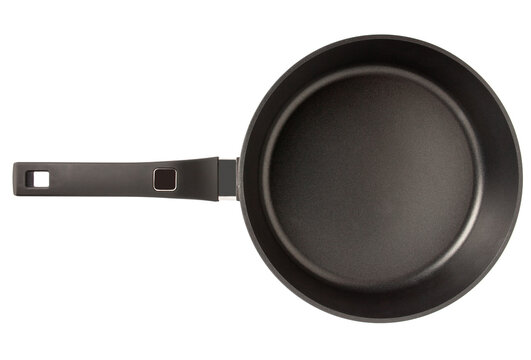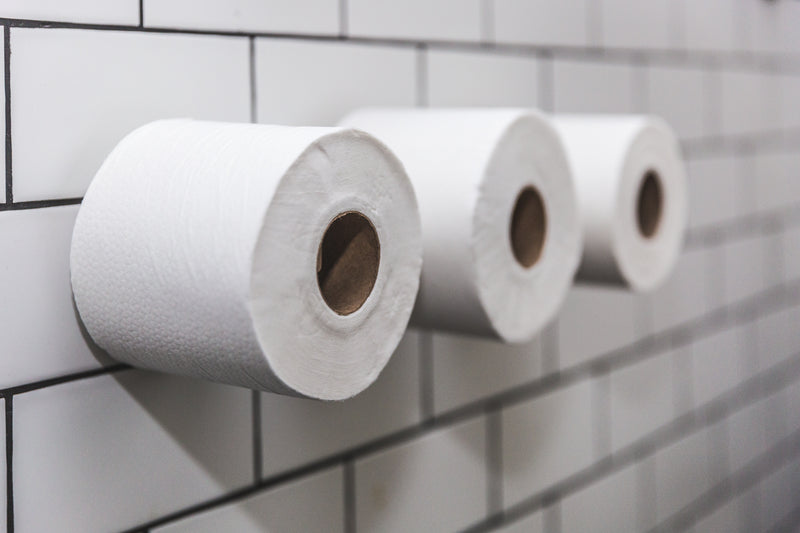Plumbing can be a tricky business, especially when it comes to connecting pipes and fixtures in tight spaces. For years, plumbers have struggled with finding the right connector that fits just right without compromising the integrity of the entire system. But what if we told you there’s a solution that makes plumbing easier and more efficient? In this blog post, we’ll introduce you to a game-changing product in the hardware niche – bent flexible pan connectors. You won’t want to miss out on this!
What is a Bent Flexible Pan Connector?
A bent flexible pan connector is a plumbing accessory that connects the toilet pan to the waste pipe. It is made of rubber or plastic and features a flexible, bendable design. Unlike traditional connectors, which are rigid and difficult to maneuver in tight spaces, bent flexible pan connectors can be adjusted to fit any angle or orientation. This makes them ideal for use in modern bathrooms with limited space or odd angles. They also help prevent leaks by creating a secure, watertight seal between the toilet and waste pipe. Overall, bent flexible pan connectors are an essential tool for making plumbing easier, faster and more efficient than ever before.

Benefits of Using a Bent Flexible Pan Connector in Plumbing
Bent flexible pan connectors have revolutionized plumbing by providing a solution to the age-old problem of connecting toilets to drains. These connectors are designed with a bendable, corrugated pipe that can be easily manipulated into any shape or angle required for your specific installation needs. One of the key benefits of using these bendable toilet fittings is their ability to help overcome awkward angles and restricted spaces, making them ideal for use in tight-fitting bathroom spaces like en-suites, cloakrooms or small bathrooms.
Additionally, bent flexible pan connectors also help prevent leaks from developing at connection points as they conform perfectly into place without requiring excessive bending or stretching during installation. This ensures that water flows smoothly through your pipes without encountering any blockages which might cause pressure buildup and damage over time. Overall, choosing a good quality bent flexible pan connector will simplify your plumbing projects while ensuring long-lasting performance and reliability.

How to Choose the Right Bent Flexible Pan Connector for Your Plumbing Needs
When choosing a bent flexible pan connector for your plumbing needs, there are a few things to consider. First, make sure the connector is the right size for your toilet and waste pipe. Measure the diameter of both and choose a connector that matches. Next, consider the angle of the bend. Some connectors have a fixed angle, while others are adjustable. Choose one that will fit your specific installation needs. Finally, look for connectors made from high-quality materials that are durable and long-lasting. PVC and rubber are popular choices for their flexibility and resistance to wear and tear. By choosing the right bent flexible pan connector, you can ensure a secure and leak-free connection between your toilet and waste pipe.

Installing a Bent Flexible Pan Connector: Step-by-Step Guide
Once you have chosen the right bent flexible pan connector for your plumbing needs, it’s time to install it. Here is a step-by-step guide on how to do this:
- Remove the old pan connector by gently twisting and pulling it off.
- Clean the area where the new connector will be fitted with a damp cloth.
- Measure the distance between the toilet waste outlet and soil pipe inlet and mark this measurement on your new pan connector using a marker pen or pencil.
- Use scissors or pruning shears to cut your flexi toilet piping accordingly along that marked line in order to fit both ends comfortably into their respective openings without straining either side.
- Apply lubricant gel onto both ends of your newly-cut bendable toilet soil pipe/s before sliding one end over the waste outlet and then pushing down on other towards sealing tightly against soil pipe inlet till there is no gap between them anymore.
Remember not to overtighten!

Tips and Tricks for Maintaining Your Bent Flexible Pan Connectors
Maintaining your bent flexible pan connectors is crucial to ensure they continue to function properly and prevent any leaks or blockages. One important tip is to regularly check for any signs of wear and tear, such as cracks or tears in the rubber. If you notice any damage, it’s best to replace the connector as soon as possible. Additionally, make sure to clean the connector regularly with a mild detergent and warm water to prevent any buildup of debris or bacteria. Avoid using harsh chemicals or abrasive cleaning tools that could damage the rubber. Finally, always follow the manufacturer’s instructions for installation and use to ensure optimal performance and longevity of your bent flexible pan connectors.

The Different Types of Bent Flexible Pan Connectors Available on the Market Today
The Benefits of Using Bent Flexible Pan Connectors in Plumbing
Bent flexible pan connectors offer many benefits when it comes to plumbing. One of the key advantages is their ability to bend and flex, making them ideal for use in tight spaces or awkward angles. This feature also makes them more versatile than traditional straight connectors, as they can be adjusted to fit a wider range of toilet and waste pipe configurations. In addition, bent flexible pan connectors are often made from high-quality materials that are durable and long-lasting. They are also typically easier to install than other types of connectors and can help reduce the risk of leaks or other plumbing problems over time.
A Comprehensive Guide to the Different Types of Bent Flexible Pan Connectors
There are several types of bent flexible pan connectors available on the market today, each with their own unique features and benefits. The most common types include straight, offset, and swan neck connectors. Straight connectors are ideal for simple installations where the toilet is directly above the soil pipe. Offset connectors are designed for situations where the toilet needs to be positioned slightly to one side of the soil pipe. Swan neck connectors are perfect for installations where the soil pipe is located below the level of the toilet. It’s important to choose the right type of connector for your specific plumbing needs to ensure a secure and leak-free installation.
Installation Tips and Tricks for Bent Flexible Pan Connectors
Some important installation tips and tricks to keep in mind when using bent flexible pan connectors in your plumbing system include ensuring that the connector is made from high-quality materials such as polypropylene, EPDM rubber, or PVC. This will help prevent leaks and ensure durability over time. Additionally, always use a lubricant such as silicone grease during installation to make it easier to fit the connector into place without causing damage.
It’s also important to consider the type of connection you need when choosing a bent flexible pan connector. Some options include compression fittings, push-fit connections or solvent weld joints which can affect how they are installed. It’s best to consult with an experienced plumber or follow manufacturer instructions for proper installation techniques specific for each type of connection method.

Why a Good Quality Bendable, Flexi or Curved Toilet Soil Pipe is Essential in Modern Plumbing Systems?
Bendable, flexi or curved toilet soil pipes are essential in modern plumbing systems because they offer a range of benefits that traditional rigid pipes cannot. Firstly, they are easier to install and connect to the toilet pan, as they can be bent and shaped to fit any angle or distance. This means that you can avoid awkward angles and unsightly joints that can cause leaks or blockages.
Secondly, bendable toilet soil pipes are more durable and long-lasting than traditional pipes. They are made from high-quality materials that are resistant to corrosion, rust, and other forms of damage. This means that you can enjoy a reliable and efficient plumbing system for many years without having to worry about costly repairs or replacements.
Overall, if you want to ensure that your plumbing system is up-to-date and efficient, then investing in a good quality bendable toilet soil pipe is essential. Whether you are renovating your bathroom or building a new home, make sure to choose a product that is designed to last and provide optimal performance.
Comparison Between Traditional Vs Bendable Toilets Fittings: Which Is Better?
Bendable toilets fittings have become increasingly popular in modern plumbing systems due to their flexibility and ease of installation. Unlike traditional rigid fittings, bendable toilet connectors can be easily shaped and adjusted to fit any angle or position, making them ideal for tight spaces or unusual configurations.
One of the main benefits of using a bendable toilet connector is that it reduces the risk of leaks and blockages. Because the connector can be adjusted to fit perfectly between the toilet and the soil pipe, there is less chance of water or waste escaping and causing damage to your home.
Another advantage of bendable toilet fittings is that they are often made from high-quality materials that are resistant to corrosion and wear. This means that they are more durable than traditional fittings and will last longer, saving you money in the long run.
Overall, if you’re looking for a reliable and easy-to-install solution for your plumbing needs, bendable toilet fittings are definitely worth considering. They offer a range of benefits over traditional rigid connectors, including greater flexibility, improved durability, and reduced risk of leaks or blockages.
Common Mistakes People Make When Installing or Replacing their toilet pan connectors
Common mistakes people make when installing or replacing their toilet pan connectors can lead to leaks, blockages, and other plumbing issues. One of the most common mistakes is not measuring the distance between the toilet and the waste pipe correctly. This can result in a connector that is too short or too long, causing leaks or blockages. Another mistake is not using the correct type of connector for the toilet and waste pipe. It’s important to choose a connector that is compatible with both the toilet and waste pipe to ensure a proper fit. Finally, some people forget to tighten the nuts on the connector properly, which can also lead to leaks. To avoid these mistakes, it’s important to carefully measure, choose the right connector, and follow installation instructions closely.
In conclusion, a bent flexible pan connector can make plumbing easier by providing flexibility and easy installation. It is essential to choose the right type of connector according to your plumbing needs and maintain it properly for optimal performance. With various types of connectors available on the market today, it’s vital to know their differences before making a purchase decision. A good quality bendable, flexi or curved toilet soil pipe is also crucial in modern plumbing systems. And if you’re wondering whether traditional fittings are better than bendable ones, this article has given you some valuable insights about them both.
Finally, avoiding common mistakes when installing or replacing your toilet pan connectors can prevent any future damages and ensure proper functionality. So, invest in a reliable bent flexible pan connector that fits well with your plumbing system’s configuration to have trouble-free operation for years to come!
FAQs
Who should use a bent flexible pan connector?
Anyone installing a toilet with an offset waste pipe.
What is a bent flexible pan connector?
It’s a plumbing fitting that connects a toilet to a waste pipe.
How does a bent flexible pan connector work?
It flexes to fit the offset between the toilet and waste pipe.
Why choose a bent flexible pan connector over a rigid one?
It’s easier to install and less likely to crack or leak.
What sizes do bent flexible pan connectors come in?
They come in various sizes to fit different toilet and pipe sizes.
Can a bent flexible pan connector be used for vertical pipes?
No, it’s only suitable for offset horizontal pipes.
